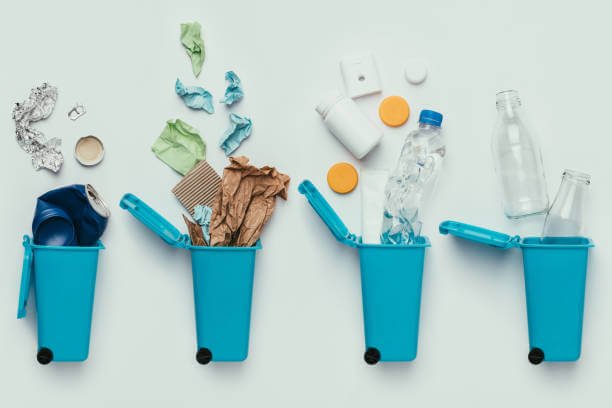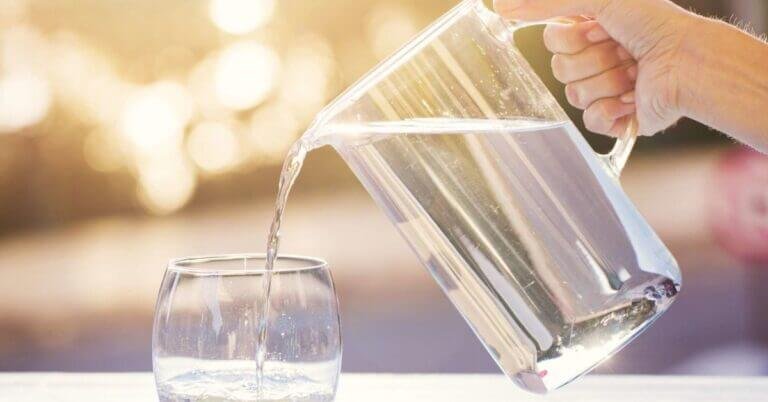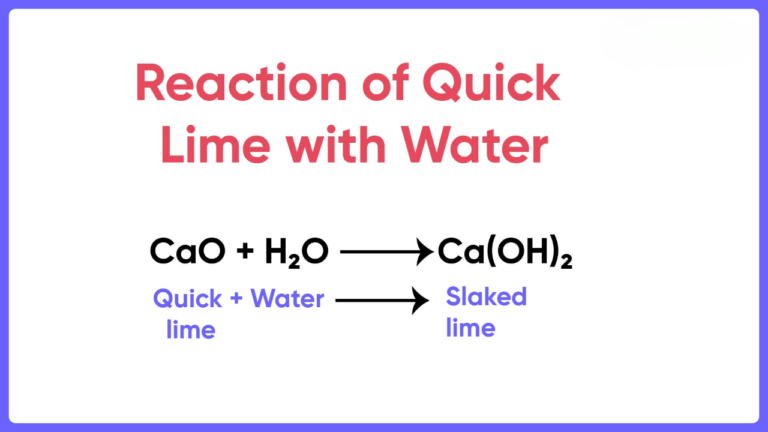Recycled Plastic : These 7 Types of Plastics
What Is Recycling?
With the increase of different kinds of pollution like air, water, or noise pollution, it is important to implement whatever measures we can to control the hazards to the environment. Recycling is one of the measures that help in saving the natural world. When we collect and process the waste and create new products for use, we can call it recycling of the waste materials. It aims to conserve natural resources and control the harm to the environment. The process of recycling reduces waste and its impact on the environment. Many materials can be recycled. From paper to plastic and glass to metals, there is a wide range of materials that can be reused for use.
Recycling mainly follows four steps-
- It starts when the waste materials are COLLECTED
- Then waste materials are SORTED
- Then they PROCESSED to remove any contaminants or non-recyclable materials.
- Lastly, they are TRANSFORMED into new products.
The new products include recycled paper, plastic bottles, aluminum cans, etc. As many materials like plastic take years to decompose, recycling helps in reducing the amount of waste as well as save the earth from hazardous materials. Recycling also helps in reducing greenhouse gas emissions.
Sustainability is important for future generations and recycling promotes it. The world keeps evolving and keeps bringing new technologies to better our lives. We cannot deny that some of the activities are important for our survival. We must know what kind of plastic for recycle process should be used. The recycling process reduces the impact of our activities on the earth. Individuals, businesses, and governments have to work together to ensure that waste materials are properly collected, sorted, and processed to create new products.
Why Recycling?
Recycling is important for several reasons
Conserves natural resources
Recycling reduces the need for raw materials, which helps to conserve natural resources such as timber, water, and minerals.
Reduces waste
Recycling reduces the amount of waste that goes under the land, which can help to prevent environmental pollution. This waste might also release greenhouse gases that result in climate change. Reducing waste is a measure that supports the environment.
Saves energy
Recycling requires less energy than producing new products from raw materials. This is because of the reason that the material that is going to be recycled has already undergone processing, therefore less energy is needed to turn them into new products.
Supports the economy
Recycling creates jobs in the collection, processing, and manufacturing of recycled materials. A recycling industry hires many employees to perform different roles. It helps to support the economy.
Encourages sustainable practices
Recycling promotes sustainable practices by encouraging individuals, businesses, and governments to reduce waste and conserve resources.
Overall, recycling is an important way to reduce waste, conserve resources, and promote sustainable practices that benefit both the environment and the economy.

These 7 Types of Plastic Can Be Recycled
Yes, these are the 7 types of plastic that comes under ‘plastic for recycle
- Polyethylene Terephthalate (PET or PETE) – used in water bottles, soda bottles, and food packaging
- High-Density Polyethylene (HDPE) – used in milk jugs, detergent bottles, and toys
- Polyvinyl Chloride (PVC) – used in pipes, window frames, and medical tubing
- Low-Density Polyethylene (LDPE) – used in plastic bags, squeeze bottles and cling wrap
- Polypropylene (PP) – used in bottle caps, yogurt containers, and some food packaging
- Polystyrene (PS) – used in foam packaging, disposable cups, and cutlery
- Other (often labeled with the resin code #7) – includes polycarbonate, nylon, and some bioplastics
Here Is the Description of All 7 Types of Plastic That Can Be Recycled:
Polyethylene Terephthalate (PET or PETE)
Polyethylene Terephthalate (PET or PETE) is a type of plastic that is commonly used in the manufacturing of water bottles, soda bottles, and food packaging. Because it is a lightweight and durable plastic, it is easier to mold it in different shapes and sizes. It is a transparent plastic. It is also used in creating fiber products like polyester fabrics and other items.
PET is a highly recyclable plastic, and it is one of the most widely recycled plastics in the world. When recycled, PET can be turned into a range of products, including new bottles and containers, polyester fibers for clothing and carpets, and even furniture.
Not all PET products are recyclable, and contamination can be a problem. It’s best to check with your local recycling program by your local government to inform yourself which types of PET products they accept and to ensure that your recyclables are properly cleaned and sorted before recycling.
High-Density Polyethylene (HDPE)
High-Density Polyethylene (HDPE) is a type of plastic that is commonly used in the manufacturing of milk jugs, detergent bottles, and toys, among other products. It is a tough, lightweight, and versatile plastic that is resistant to moisture and chemicals, making it a popular choice for many applications.
HDPE is also a highly recyclable plastic, and it is one of the most commonly recycled plastics in the world. When recycled, HDPE can be turned into various kinds of products, including new bottles and containers, plastic lumber, and even plastic toys.
Like other types of plastic, it’s important to note that not all HDPE products are recyclable, and contamination can be a problem. It’s best to check with your local recycling program to see which types of HDPE products they accept and to ensure that your recyclables are properly cleaned and sorted before recycling.
Polyvinyl Chloride (PVC)
Polyvinyl Chloride (PVC) is a type of plastic that is commonly used in the manufacturing of pipes, window frames, medical tubing, and other products. It is a durable, flexible, and cost-effective plastic. Because of its high durability, it is resistant to weather, fire, and chemicals.
While PVC is technically recyclable, it is not widely accepted for recycling due to the challenges associated with processing and the potential release of harmful chemicals during the recycling process. In addition, some PVC products contain additives that can make them difficult to recycle or may result in recycled products with reduced performance.
Because of these challenges, many recycling programs do not accept PVC products for recycling. Instead, PVC products should be disposed of properly by local regulations. It’s important to note that burning PVC can release toxic chemicals, so it should never be burned in an open fire or as a means of disposal.
Low-Density Polyethylene (LDPE)
Plastic bags and squeeze bottles are the common products that are manufactured with Low-Density Polyethylene (LDPE). It is a kind of plastic that is durable and lightweight. The most amazing thing is that it is resistant to moisture and chemicals.
LDPE is a highly recyclable plastic, although it is less commonly recycled than some other plastics like PET and HDPE. When recycled, LDPE can be turned into new plastic bags and packaging, plastic lumber, and even irrigation pipes.
Like other types of plastic, it’s important to note that not all LDPE products are recyclable, and contamination can be a problem. It’s best to check with your local recycling program to see which types of LDPE products they accept and to ensure that your recyclables are properly cleaned and sorted before recycling. Some recycling programs may require LDPE products to be collected separately or processed using specialized equipment.
Polypropylene (PP)
Polypropylene (PP) is a type of plastic that is commonly used production of bottle caps, yogurt containers, and some food packaging, among other products. It is a tough, lightweight, and versatile plastic that is resistant to heat and chemicals, making it a popular choice for many applications. It is reusable as well as recyclable.
PP is a highly recyclable plastic, and it is commonly accepted for recycling in many recycling programs. When recycled, PP can be turned into new bottles and containers, automotive parts, and even furniture.
However, it’s important to note that not all PP products are recyclable, and contamination can be a problem. Check your local guidelines for the recycling program.
Polystyrene (PS)
Polystyrene (PS) is another kind of plastic that is commonly used in manufacturing foam cups, foam plates, packing items, and disposable food containers. It is a plastic that is lightweight and flexible which helps it to get molded into different shapes.
PS can be recycled, but it is not as widely accepted for recycling as some other plastics like PET and HDPE. When recycled, PS can be turned into a variety of products, including insulation, picture frames, and even rulers.
However, there are some challenges associated with recycling PS. PS foam products, like foam cups and packing peanuts, are particularly difficult to recycle because they are lightweight and take up a lot of space. In addition, some recycling programs do not accept PS products because of the low demand for recycled PS.
Because of these challenges, it’s important to check with your local recycling program to see if they accept PS products for recycling. If they do not, it’s best to dispose of PS products properly by local regulations.
Other (often labeled with the resin code #7)
Resin code #7 is used to refer to a category of plastics other than the above-mentioned six resin codes. This range of plastics includes a range of plastics, including (PC), Polylactic Acid (PLA), Acrylonitrile Butadiene Styrene (ABS), Polycarbonate, and some other plastics
These plastics do not work in the process of recycling like the other resin codes. For instance, PC is seldom recycled but it releases toxic chemicals in the process. Due to this reason, it is restricted in many areas to recycle PC. PLA on the other hand is a bioplastic.
Bioplastics are compostable but require some specific facilities to take on the process of recycling. Acrylonitrile Butadiene Styrene that is commonly known as ABS plastic is a thermoplastic. It requires a combination of other plastics to proceed with the recycling process.
Due to the variety in the types of plastics and their recycling process, it’s important to check the local regulations to check which kind of process is supported in your area. Sometimes, it may turn out better to dispose of #7 plastics.







